While former President Felipe Calderón made Michoacán the original epicenter of the war against the cartels, President Andrés Manuel López Obrador essentially gave up on tackling them, writes Vanda Felbab-Brown, which has neither lessened violence, nor reduced cartel repression and brazenness. This piece was originally published by Mexico Today.
The military offensive of the Cartel Jalisco Nueva Generación (CJNG) in the Tierra Caliente in mid-September is only the latest demonstration of the unrestrained brazenness of the Mexican criminal market. It is all the more poignant that the Cartel’s broad-daylight military-style offensive to seize a municipality took place in Michoacán. For decades, the state has been a major drug trafficking hub and since 2006 the symbol of Mexico’s anti-crime policies. But while former President Felipe Calderón made Michoacán the original epicenter of the war against the cartels, President Andrés Manuel López Obrador essentially gave up on tackling them. However, the absence of a central government policy to confront the cartels has neither lessened violence in Mexico, nor reduced CJNG repression and brazenness. As President López Obrador continues to ignore the war-like violence, the people of Michoacán continue to suffer.
CJNG has long indulged in brazenness and brutality. The Cartel has shot down military helicopters and attacked high-level Mexican officials in a war-like ambush in Mexico City. CJNG has purposefully sought to cultivate an image of a criminal group without restraint and without any fear of government authority. In the latest episode, CJNG, acting more like a militant group of the Taliban and al Shabab kind, attacked the town of Tepalcatepec on the evening of Tuesday September 16 in a battle that persisted for over 24 hours. It was fighting the rival criminal coalition known as Cárteles Unidos, which now incorporates the remnants of Michoacán earlier large criminal group –Caballeros Templarios – and smaller local groups, including La Nueva Familia Michoacana, Los Viagras, the Tepalcatepec Cartel, and former local anti-crime militias that have flipped to the criminal side. After CJNG failed to take the town, it switched its immediate effort to take over a nearby community of La Estanzuela. Its failed attack against Tepalcatepec will most unlikely be its last attack against the town, which it has sought to seize since August 2019. Earlier this year, CJNG took over several communities and ranches in the Tepalcatepec municipality, trying to push closer to the town.
The brazen blatantly-visible nature of the offensive against Tepalcatepec is significant, being a modus operandi hallmark of CJNG. The Cartel could have simply attempted to take over the town’s legal and illegal markets through a quiet clandestine campaign of assassinating members of Cárteles Unidos and the militias affiliated with them and of local officials. But instead, even more so than the Zetas a decade ago and far more so than its principal rival, the Sinaloa Cartel, CJNG relishes acting as a de facto nonstate army. The military-style attack on Tepalcatepec was not necessary for accomplishing the objective, yet it was a deliberate strategic choice. CJNG seeks to operate not just in the underground; it wants its territorial and economic rule to be fully visible to all, including the Mexican state, which under López Obrador’s direction, merely averts its eyes.
For years, CJNG has tried to establish a criminal primary in Michoacán and the Tierra Caliente more broadly — a place rich with the production of methamphetamine, fentanyl smuggling, poppy cultivation, illegal logging, and extorsion rackets targeting any economic activity from Oxxo convenience stores to avocado farmers to mining companies.
To this effect, CJNG has deployed a variety of tactics, beyond its purposefully cultivated image of brazenness. In the latest attack, CJNG has sought to broadly intimidate the population of Tepalcatepec, not simply rival criminal groups and law enforcement and military units in the state of Michoacán. It circulated audio messages threatening to indiscriminately kill Tepalcatepec residents. The indiscriminate threat partially stems from CJNG’s frustrations in failing to take over the town and its blaming local residents for resisting its takeover. In September 2019, for example, it urged Tepalcatepec residents in a social media message to run out of town Juan José “El Abuelo” Farías, a former self-defense militia group leader and now presumably a leader of the crime group Los Viagras.
CJNG has also been a pioneer in the use of new technologies diffused to nonstate armed actors, particularly drones. It uses drones not just for surveillance and drug deliveries, but also for attacks. In its latest campaign in Tepalcatepec, its drones have dropped bombs not only on rival group checkpoints, but also apparently on rural populations more broadly. This aerial bombardment has been one factor leading to large internal displacement in Michoacán in recent months, enabling CJNG gunmen to enter and seize communities emptied of local populations.
Emptying out local populations, however, only makes sense for CNJG in particularly valuable strategic military or smuggling locations or areas where land is valuable and the stolen acres can be sold for avocado plantations or mining, since overall CNJG income depends on “taxing” the economic activities of local populations.
Along with CJNG, other intimidation and the violence among the various criminal groups has led to the internal displacement of thousands of the Michoacán people and the forced disappearances of hundreds.
CJNG has similarly tried to intimidate and coopt local municipal and state officials as well as security actors – from the weak municipal police to state police and even deployed military and Guardia Nacional units. Such intimidation and cooptation, of course, is hardly a CJNG innovation. Instead, CJNG is merely building and pushing to more extreme limits tactics long practiced by other criminal groups in Michoacán.
A decade ago, on one of my research trips to Michoacán’s Tierra Caliente, I was told the following story: After recent elections, several pickup trucks loaded with men armed with assault weapons pulled up next to the house of the recently elected new mayor. They entered his house and told him that all law enforcement action by municipal police forces would have to be cleared with the cartel and directed only against its rivals, and 20 percent of all public spending in the municipality would have to be handed over to the cartel; otherwise, he and his family would be killed. Although the mayor informed state authorities in the capital of Morelia, they failed to provide him any meaningful support: No state police officers were stationed in the municipality (it would take them at least two days to get there during a violent action to investigate a particularly egregious murder, if fuel happened to be available.) Several days later, I was told, the mayor received a message from a rival criminal group not to obey the first cartel, not to target their criminal group, and to hand a portion of public spending to them instead. His sense apparently was that he could absolutely not trust the municipal police to defend him as he considered it to be infiltrated by at least one of the criminal groups.
Since then, Mexican criminal groups have moved far beyond merely seeking to intimidate and capture politicians who are elected. They actively and violently seek to shape who is elected in the first place to do their bidding: to protect them and their smuggling and extortion assets against national-level enforcement, target rival groups, cough up a part of local government budgets to them, and direct government contracts to companies they extort. In order to get their preferred politicians elected, they force local populations in areas they control to vote for the candidate of their choice, kill or intimidate rival politicians to drop out from races, and deliver illegal donations for politicians. Such involvement of criminal groups in Mexico is not new, but it appeared to be particularly intense during the June 2021 elections, particularly in Michoacán. Moreover, unlike during elections in decades past when Mexican politicians initiated and dictated the terms of the electoral services of criminal groups to their campaigns, it is now the criminal groups that frequently select their political candidates and dictate the terms of the deal.
Such nefarious roles of criminal groups in elections in all of these modalities is, of course, hardly unique to Mexico – rather, it is very prevalent, and is featured strongly in the politics of Nepal, India, Pakistan, Indonesia, Nigeria, Kenya, Jamaica, Brazil, and elsewhere.
However, the persisting criminal violence in Mexico after elections, including in Michoacán, also shows that the electoral bargains that Mexican criminal groups strike with politicians are inadequate for dividing turfs and protecting their criminal incomes. Amidst the continually fluid, contested, and out-of-control criminal market in Mexico, such alliances provide merely temporary advantages, and have not been sufficient to determine victories and the establishment of stable turfs and balances of power. The very fragmented multipolar criminal market is as unstable as the local Mexican political arrangements, and merely makes local politicians and security officials targets and new actors in the criminal contestation.
Nor is the municipality of Tepalcatepec the only municipality in Michoacan and the Tierra Caliente suffering the CJNG onslaught, the warfare among Mexican criminal groups, and the apathy and criminal cooptation of the Mexican security and elected officials. In Michoacán alone, the municipalities of Aquila, Coalcomán, and Apatzingán have similarly been attacked and controlled for months or years.
Is the López Obrador administration ever going to wake up to its responsibility for confronting the cartels and protecting local populations and state institutions, or will it continue to hope that the criminal groups themselves will eventually settle their territorial and political turf wars, and thus the violence will subside even as local populations and state and political institutions are captured by vicious criminals?
Simply breaking up the connections between corrupt and cooptated elected officials and criminal groups and the criminal incomes of politicians is inadequate, although very important. Even if the López Obrador administration actually found a neutral, apolitical, but determined will to start investigating and prosecuting such criminal-political alliances, it would have to find a way to do it more robustly and even with more lasting effects than brought about by the Calderón administration (which at one point arrested tens of corrupt and criminally-coopted politicians in Michoacán alone). But the prosecutions mostly fell through and they had no deterrence effects whatever in the state or beyond. All incapacitation and deterrence effects will be undermined and lost if the López Obrador government continues to be uninterested in confronting the violent firepower of criminal groups and leaves local politicians, elected officials, populations, and territories at the mercy of criminal groups.
The Brookings Institution is committed to quality, independence, and impact.
We are supported by a diverse array of funders. In line with our values and policies, each Brookings publication represents the sole views of its author(s).
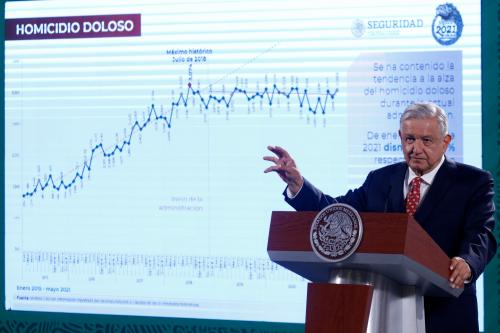
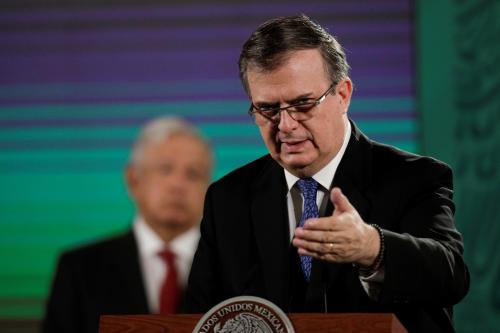
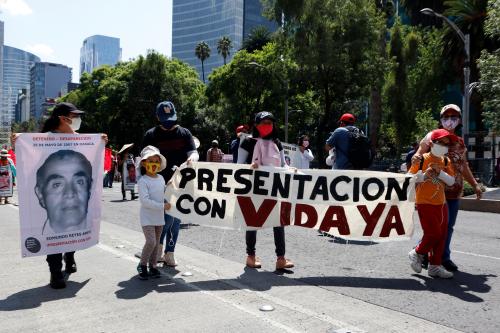

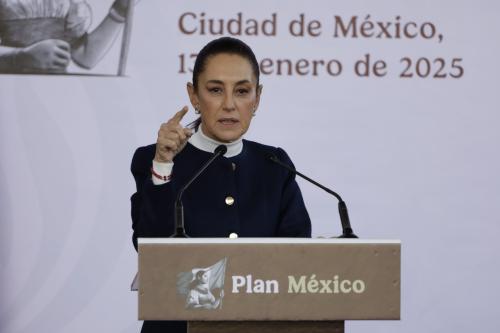
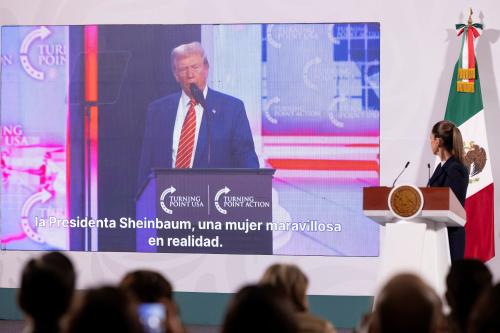

Commentary
Op-edCriminal violence, politics, and state capture in Michoacán
September 24, 2021